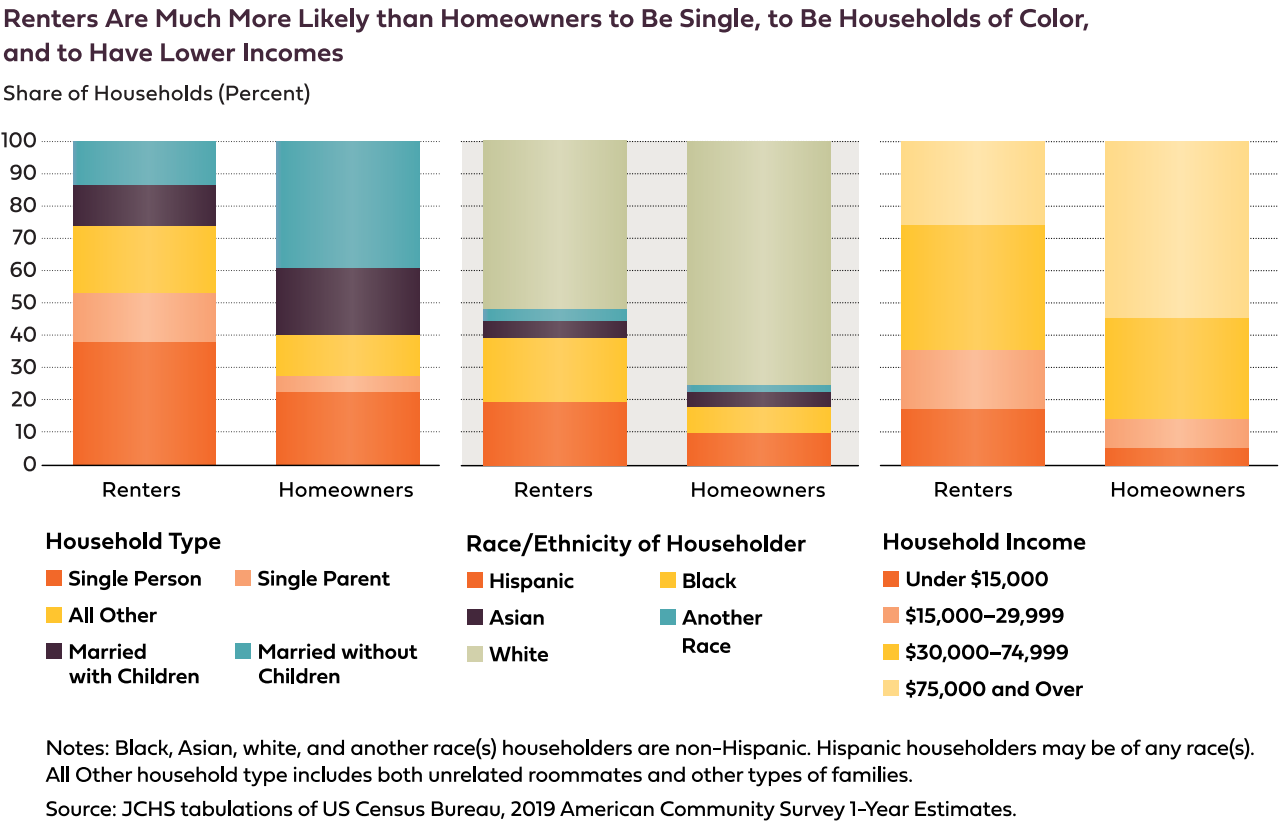 The lull in the rental market seen at the onset of the pandemic is all but a distant memory as rents have surged by double digits over the past few months indicating that the rebound, in part, is caused by the lack of inventory in the purchase market.
The lull in the rental market seen at the onset of the pandemic is all but a distant memory as rents have surged by double digits over the past few months indicating that the rebound, in part, is caused by the lack of inventory in the purchase market.
According a new report titled “Americas Rental Housing 2022” for the Joint Center for Housing Studies at Harvard University (JCHS), the rough number of households that rent across the country stands at 44 million, an 870,000 household increase from the first quarter of 2020 when the COVID-19 pandemic began. This increase in demand also pushed the rental vacancy rate down to 5.8%—the lowest seen since the mid-1980s—while demand for professionally managed units increased by 13.8%.
The onset of the pandemic affected everyone differently, but it hit low-wage workers of color the hardest. According to the report, nearly a quarter of black renters were behind on rent in the third quarter while Hispanic and Asian renters were behind at rates of 19% and 18%, respectively. The rate for white renters in the third quarter was 9% in comparison.
“This disparity reflects long-term discrimination in labor markets that has consigned many households of color to low-wage jobs in the service industry, and this sector suffered the most drastic employment cuts over the past two years, which has only compounded existing inequalities,” wrote Whitney Airgood-Obrycki, a Research Associate at JCHS.
The report goes on to state that higher-income households are also putting pressure on the rental market as homes become less affordable due to would-be buyers remaining in the rental market for longer periods instead of moving into a house.

This is also leading builders to create more high-end apartments instead of much needed affordable options. Through November 2021, new multifamily housing starts reached a 30-year high of 466,000 units, exceeding the previous annual pace of about 350,000 units.
It should be noted that low-cost rentals are disappearing as large, multi-family units become increasing prevalent. The number of rental units costing less than $600 per month fell by 3.9 million units between 2011 and 2019 while the median asking price for rent for a newly-completed unit in 2021 increased to $1,715.

36% of all renters make less than $30,000 a year
The group of 44 million Americans that rent are a diverse group that included people of all backgrounds, incomes, and family types. Still, data shows there are still deep divides in this group.
The report found that renters are traditionally younger than their home owning counterparts; on average, renters were found to have a median age of 42, while homeowners were 57. Adults under 35 comprised one-of-three rental households, while renters over 65 accounted for one-in-six.
“In addition, the share of renter households headed by a person of color (48%) is almost twice that of homeowner households (25%),” the report said. “High rentership rates among households of color reflect longstanding disparities in access to homeownership, including discriminatory lending, legal, and real estate practices.”
“As a result, some 58% of Black households rented their housing in 2019, along with 52% of Hispanic households, 43% of American Indian or Alaskan Native households, and 39% of Asian households. The rentership rate for white households is far lower at just 28%. Although households of color are younger on average than white households, large disparities in rentership rates also exist within age groups.”
According to the Department of Urban Development’s definition of low-income (earning no more than 89% of the adjusted area median income), 61% of all renter households are at or under this threshold.
Renters are also less likely to have savings in the case of income loss. Renters were found to have about $6,300 on hand for emergencies, while homeowners had about $10,100. Those earning less than $30,000 a year were found to have just $1,700 of net wealth and $320 in cash.
"Households of color are overrepresented in the lowest income groups,” the report said. “Black households make up only 12% of all households, but 27% of renters earning less than $15,000 and 25% of those earning less than $30,000. Hispanic households also account for 19% of renter households making less than $30,000, but only 14% of households overall. Although white households make up almost half of lower-income renters, this share is actually low relative to their 67% share of all households. In contrast, the share of Asian households with lower incomes is comparable to their share of all households.”
“The legacy of structural racism is clear from the disproportionate shares of households of color that live in high-poverty neighborhoods. Regardless of income, some 51% of Black renter households, 45% of Native American renter households, and 44% of Hispanic renter households lived in neighborhoods with at least 20% poverty in 2019. The shares of Asian and white renter households were far lower at just 22 and 25%, respectively.”
While the JCHS was able to identify the shortcomings and disadvantages that plague low-income and renters of color, they suggested that more needs to be done to fix our current national housing policy.
“This is a pivotal moment for national housing policy. The pandemic has brought the long-simmering rental affordability crisis to the fore, and the current administration supports large-scale investments in both new and existing rental housing, as well as in subsidy programs,” Airgood-Obrycki concluded. “By creating a comprehensive, well-funded housing safety net, the nation has the opportunity to pull millions of households out of poverty, address longstanding inequities in housing delivery, and ensure that every household has access to a decent and affordable home.”
Click here to download a copy of the report, or click here to view interactive interpretations of the data.

 DSNews The homepage of the servicing industry
DSNews The homepage of the servicing industry









